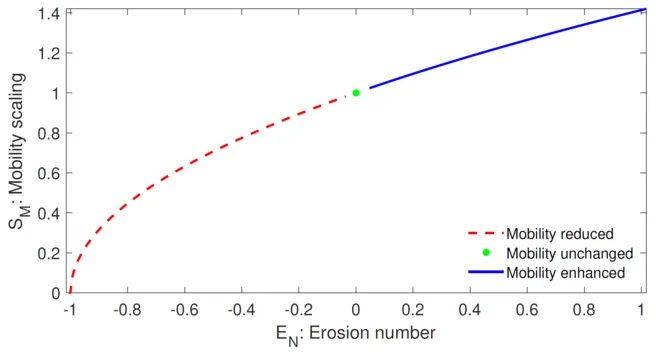Erosion, as a key control of landslide dynamics, significantly increases the destructive power by rapidly amplifying its volume, mobility and impact energy. Mobility is directly linked to the threat posed by an erosive landslide. No clear-cut mechanical condition has been presented so far for when, how and how much energy the erosive landslide gains or loses, resulting in enhanced or reduced mobility. We pioneer a mechanical model for the energy budget of an erosive landslide that controls its mobility. A fundamentally new understanding is that the increased inertia due to the increased mass is related to an entrainment velocity. With this, the true inertia of an erosive landslide can be ascertained, making a breakthrough in correctly determining the mobility of the erosive landslide. Outstandingly, erosion velocity regulates the energy budget and decides whether the landslide mobility will be enhanced or reduced. This provides the first-ever explicit mechanical quantification of the state of erosional energy and a precise description of mobility. This addresses the long-standing question of why many erosive landslides generate higher mobility, while others reduce mobility. By introducing three key concepts: erosion-velocity, entrainment-velocity and energy-velocity, we demonstrate that erosion and entrainment are essentially different processes. Landslides gain energy and enhance mobility if the erosion velocity is greater than the entrainment velocity. We introduce two dimensionless numbers, mobility scaling and erosion number, delivering explicit measure of mobility. We establish a mechanism of landslide-propulsion providing the erosion-thrust to the landslide. Analytically obtained velocity indicates that erosion controls the landslide dynamics. We also present a full set of dynamical equations in conservative form which correctly includes the erosion induced net momentum production.
Pudasaini, S.P., Krautblatter, M. (2021a): The mechanics of landslide mobility with erosion. arXiv:2103.14842. https://arxiv.org/pdf/2103.14842.pdf.

